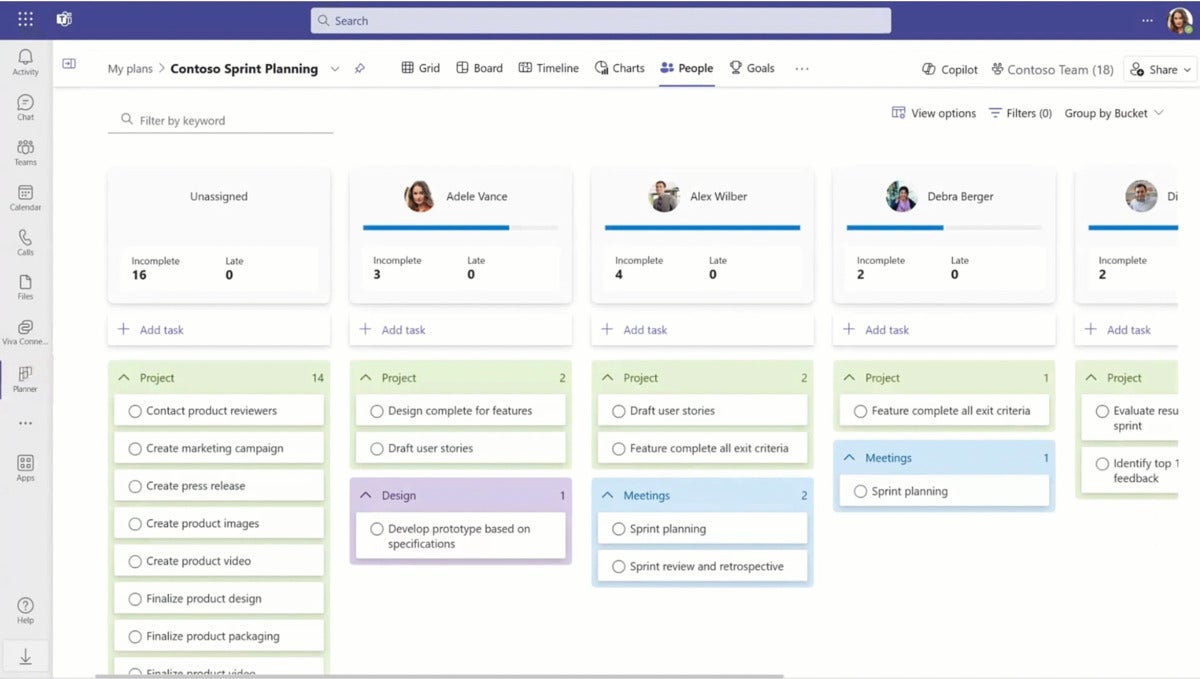Microsoft plans to integrate the online version of its Project app into Planner next year, creating a single product tool for work management.
Project has been Microsoft’s primary tool for in-depth work coordination — and a mainstay for enterprise project managers — since its launch nearly four decades ago.
To track more straightforward team and individual work, Microsoft has added more broadly accessible tools to its portfolio in recent years. Planner, which launched in 2016, is a comparatively simple work management app aimed at less complex team projects, while To Do is for personal task tracking.
At its Ignite event Wednesday, Microsoft announced that both “Project for the web” (one of several Project versions) and To Do will both be integrated into the new Planner app coming in 2024.
“The new Planner will easily scale from simple task management to enterprise project management, empowering everyone to manage their work in one place and accelerate business outcomes,” Microsoft said in a blog post.
There will be three stages to the change.
As of now, the existing ‘Tasks by Planner and To Do’ app that’s currently available in Teams will be rebranded to Planner. Next, the new Planner app in Teams will be made generally available in spring 2024. At that point, the ‘Project for the web’ app will also be rebranded to Planner (with no change to existing Project features).
Finally, the Planner web app will be made generally available in late 2024, with “Project for the web” features also integrated into it.
Microsoft noted that other versions of Project — namely Project desktop, Project Online, and Project Server — will still be available and supported, remaining separate from the Planner app. (Microsoft also noted there’s still no end-of-service date for Project Online, which is due to be phased out in favor of Project for the web at some stage.)
"Unlike 'best of breed' apps targeting users whose role is tied specifically to work management and project management, the Planner app is likely positioned to address the requirements of a broader user base,” said Raúl Castañón, senior research analyst at 451 Research, a part of S&P Global Market Intelligence. “These include team members across the organization that do not require advanced project management features, but can benefit from simple — yet effective — tools including collaborative to-do lists to manage their own and other team members’ work and project deadlines.”
Project for the web pricing will remain the same during the transition, a Microsoft spokesperson said.
Microsoft also promised new features for Planner with the addition of a premium tier. The company’s Copilot generative AI assistant will be added to Planner in spring 2024 and will let users “generate new plans, set goals, track status and react to changes as projects evolve,” Microsoft said in a blog post.
Pricing details for Copilot in Planner will be announced in the “coming months,” a spokesperson said.
Integrations are planned with Microsoft’s Loop collaborative document app, as well as Outlook, Teams and Viva Goals. For example, emails flagged in Outlook and items assigned in Teams will be visible in Planner.
There’s also a focus on frontline teams, with plans to add task management features from the Tasks app in Teams into Planner.
Microsoft also said that new enterprise-grade project management features will be added to Planner, including baselines, portfolios, and lead-lag capability. This is in addition to existing ‘Project for the web’ features such as sprints, people view, goals and advanced scheduling with dependencies available within Planner. Those features will be accessible in the premium Planner software.






